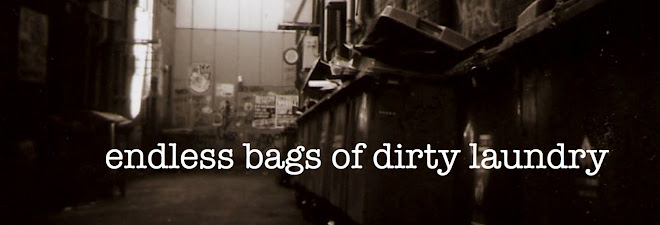Tattoos are incredibly common, especially if you live in Melbourne's inner north. Some may argue that they are so common as to be boring or unworthy of attention. Indeed, in certain areas or social scenes (Melbourne's music scene, for example) it is undoubtedly less common to come across someone with no tattoos than someone whose skin has been permanently marked. Yet I don't think that makes tattoos less interesting. Regardless of their current prevalence, they still provide endless fascination for me, no doubt in part because I don't have any myself. But think about it - someone with a tattoo has chosen to mark their body with certain words and/or images for life. What is it about those words, or that image, that renders them so special to a person? And what made them choose that part of their body? And how do they then display them to the public, if at all? (In fact, some of the more interesting choices relate to those tattoos that cannot normally be seen.)
I felt like a total creep taking the above shot, because I was obviously aiming the lens at Ester's legs and not at her face. But I quite love the image, which I suppose proves that being a creep in the name of art is worthwhile. The fact that two very crucial elements - Ester's face and the dog on the end of the leash - are missing from the frame make it much more interesting to me, because what is in the frame does plenty of explaining: the leash is pulled tight so we assume there is something strong and alive on the end, and the white hair on Ester's sleeve confirms the suspicion; while we can't see Ester's face, her sheer black stockings, chipped nailpolish and evocative tattoo tell us a lot about what she might be like. Whether the conclusions we draw are accurate or not doesn't matter; the photograph is an exercise in imagination, and ties into the idea that a lone tattoo can reveal something about its owner.
Imogen designed her remarkable tattoo, which sits proudly and colourfully on her right shoulder. I know it took a lot of planning and bravery on her part to go through with it, but I think it's worth it as it's a gorgeous aspect of her body. I hope she thinks so too. This photo is not necessarily bad, but probably doesn't stand on its own very well. When photographing subject matter as potentially cliched as tattoos, it's easy for the results to be unremarkable. However, I think something like this would work beautifully in a series.
Again, this is probably better when viewed with other images as part of a common theme, but it does have its strong points - not least of which is the fact that you can't help but wonder what's on the top of that fine looking leg. I don't know the story behind Ben's tattoo, but I do know that it suits him perfectly. He's had it (and one other) for as long as I've known him and I just can't imagine him without it. Which again contributes to the idea that body art can become so much a part of a person that it comes to partly define who they are and how they are seen.
There's great potential for a series of images on modern tattoos, particularly within one community. What do they say about the group of people? About the individuals? How strongly does body art define these people, at this time, in this place? My guess is, more stongly than you think.
26.10.10
Subscribe to:
Post Comments (Atom)







No comments:
Post a Comment